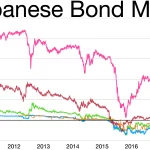Toronto-Dominion Bank, Canada’s largest lender and a key player in US banking announced Thursday that it would cut approximately 2% from its global workforce. This is part of a broader restructuring following a US record settlement for anti-money-laundering (AML).
Around 1,900 of TD’s global 95,000 employees will be affected by the job cuts. According to the bank, the restructuring could result in pre-tax charges up to C$700m over the coming quarters.
This move comes after increased regulatory scrutiny in the US and the costly resolution of AML failures. It marks a major shift in operational priorities and costs for the bank.
TD stated that the initiative will generate a C$100-million pretax benefit this year, and a C$650-million annual recurring saving thereafter.
Strategic review drives restructuring under the new CEO
A strategic review was initiated by the new CEO Raymond Chun.
This review follows TD’s payment of US$3.1 billion to US regulators last year in settlement of allegations that its anti-money laundering system was deficient.
This agreement still applies to the bank, and it prohibits them from increasing their US retail banking assets. They are also directed to focus on their domestic operations and capital markets.
Kevin Tran, TD’s Chief Financial officer, emphasized the importance of structural cost cuts and automation as part of the team restructure.
Tran noted that “some of the reductions in jobs will be through attrition”.
TD currently has 163 million C$ in charges for real estate optimisation and employee severance. Asset impairment, winding down certain business lines, as well as restructuring costs.
The earnings exceeded expectations, despite increasing credit provision
TD’s fiscal second-quarter profit was higher than expected despite the restructuring. This is due to strong fees and trading income.
Analysts had expected a profit of C$1.78 per share on average, but the bank’s adjusted profits of C$1.97 exceeded that.
The provision for credit loss, which is closely watched in light of the slowing economy, was C$1.34billion for the quarter ending April.
The bank was able to improve its bottom line by reducing the amount of money that analysts had projected at C$1.41billion.
In a recent statement, Raymond Chun, the new CEO of TD Canada said that “TD achieved strong results in this quarter with trading and fees income growing in our market-driven business as well as growth in deposit and loans in Canadian Personal and Commercial Banking”.
Restructuring in the face of economic challenges
TD was the first major Canadian bank to release quarterly results after the United States imposed tariffs on a range of Canadian goods, raising concerns over a slower economy and rising unemployment.
Investors are focusing their attention due to the economic uncertainty on credit quality, and possible defaults.
The restructuring of TD highlights that despite its strong capital base and diversification, global banks are still facing many challenges in today’s climate. These include regulatory scrutiny, inflationary costs, and the need for digital transformation.
Toronto-Dominion’s shares have risen almost 18% in the past year, thanks to market optimism after the AML Settlement Resolution and increased operational efficiency.
As new information becomes available, this post may change.
This site is for entertainment only. Click here to read more



